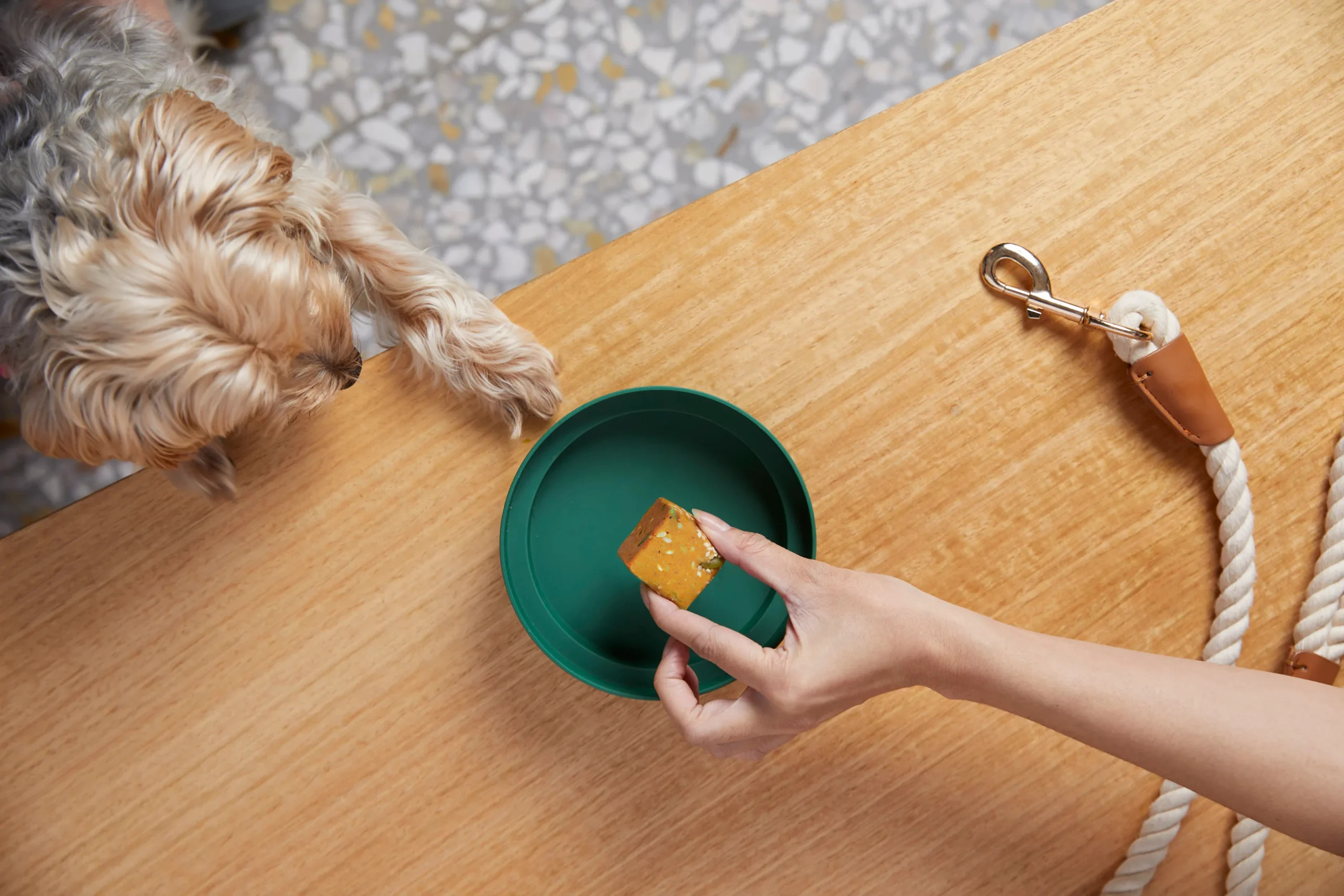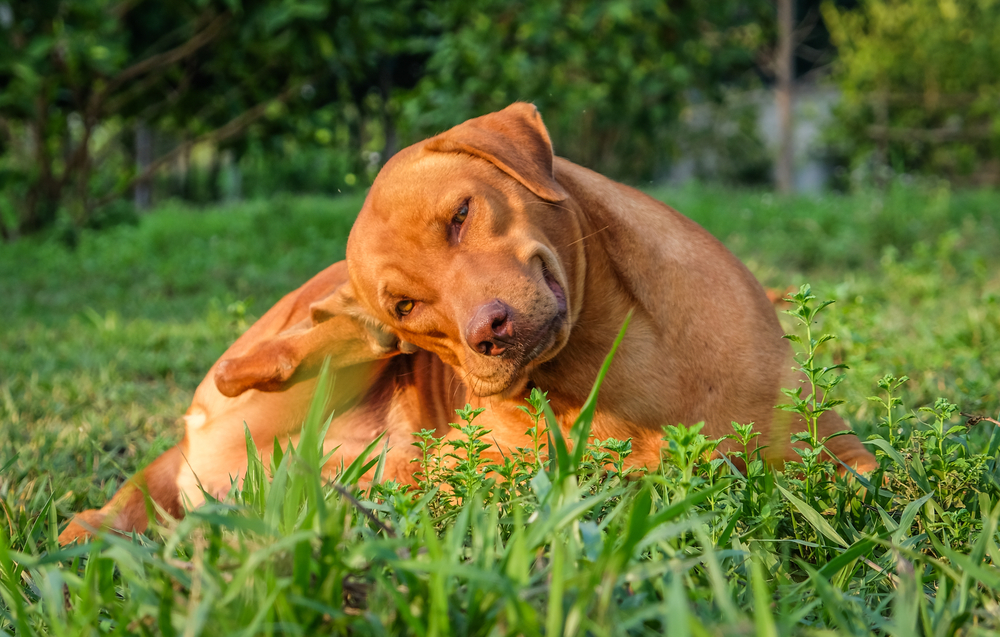Allergies in pets are not dissimilar to allergies in humans, meaning there are plenty of ways to treat them and manage them. Along with the start of warmer weather in Spring comes the increased pollen count which causes allergies.
Spring is the time of growth, flowering and new sprouts for plants and flowers which causes the increased pollen count.
In this article, we explore the various allergens that pets can be exposed to, and how you can help your furry bestie during these peak periods.
What type of allergy does your pet have?
This time of year brings lots of pollen, and it’s spread all around so it’s hard to avoid. It’s a tiny grain that gets carried by bees, wind, insects, and animals. Its extensive presence and size means it gets into every nook and cranny just like dust can. This means it’s constantly being inhaled, landing in eyes, ears and on the skin which is why it can easily cause irritation.
But, pollen is not the only culprit to cause allergies. Individual plants or flowers can cause allergies similar to how you can have individual food allergies. Specific allergies can be harder to determine, especially in pets as they often spend much more time outdoors than humans.
As well as the plant boom, Spring brings a boom of ticks, mites, and fleas which are irritating to all skin but a common allergy in pets too 🦟 Take this as a reminder to administer their parasite control treatment – shop your favourite brand at Mad Paws Pet Store.
Allergy symptoms in pets are similar to those in humans. The severity of the allergy will determine the severity of the symptoms.
How to manage allergies in pets:
Luckily allergy treatment can often be managed by using only topical medication or preventative measures. Understanding the root cause isn’t always possible or necessary. Generic pollen allergies are common and unless common treatments don’t work, there isn’t a need to know what specific plant causes the issue. Topical soothing methods like regular oatmeal baths, irritation or steroid creams, or building tolerance to local pollens might be enough to combat allergy symptoms completely.
Honey builds tolerance
Honey is a simple way to build up tolerance to pollens. While there isn’t as much evidence as there is for antihistamines and other medical treatments, it’s a much less expensive, invasive and time-consuming treatment to try.
How it works: Local honey is full of local pollens, and by ingesting small amounts regularly should in theory help build a tolerance. If a tolerance is built, theoretically it should mean fewer symptoms. Similar to introducing anything new into a pet’s diet, it should be introduced slowly, in small quantities and monitored for any signs of allergy or irritation.
Avoid high pollen exposure
Avoidance is another simple way to manage allergies. This could be as simple as changing your walking route, giving your cat or dog less outdoor freedom on high pollen count days, providing boots to protect paws, or removing irritating pollen plants from the yard.
 When to consult a Vet about allergies in my pet?
When to consult a Vet about allergies in my pet?
If symptoms escalate to open sores, hot spots, hives, swelling or can’t be managed easily, it’s crucial to consult a vet and take further action. It’s important to maintain realistic expectations that treatments aren’t an instant fix and sometimes can take days or a week to take full effect and work completely. Just like humans, an occasional sneeze or itch is normal – it’s only when symptoms are persistent that action is required.
Skin care and treatments for dogs
As they say, you are what you eat. One of the most effective solutions for superior skin care is your dog’s food intake. Take, for example, Lyka’s Kangaroo and Turkey fresh dog food recipes – both are highly digestible and hypoallergenic. A great choice for gastrointestinal health. Lyka also have skin supplements that are full of probiotics, vitamins and minerals to strengthen the immune system, aiding a long-term defence against skin irritations!
 From shampoos to sprays and everything in between, looking after your dog’s skin is manageable with the various products that can help. Check out the Dog Skin Care range on Mad Paws Pet Store. Including dog sunscreen wipes, so your dog has some coverage from UV rays too – how handy!
From shampoos to sprays and everything in between, looking after your dog’s skin is manageable with the various products that can help. Check out the Dog Skin Care range on Mad Paws Pet Store. Including dog sunscreen wipes, so your dog has some coverage from UV rays too – how handy!
Parasite control is important all year round, but especially in the warmer months. It’s vital that you stay on top of your Dog flea, tick & worm treatments to ensure they’re protected against any nasties that can latch onto their skin and sometimes be deadly!
Skin care and treatments for cats
If your cat struggles with having any topical treatments administered, don’t worry! With the wide variety of options available for Cat Skin Care, there’s sure to be a solution that suits them best.
And when it comes to Cat flea, tick & worm treatments, the spot-on treatments are so easy to administer. And remember, even if your cat stays indoors most of the time doesn’t mean they’re immune from parasites.
Did you know:
Mad Paws Pet Sitters can assist with managing your pets allergies. It’s just one of the benefits of choosing the personalised care of a Sitter. Find your pet’s perfect match and witness the difference for yourself!


